BBC Radio 1 shows that video doesn’t kill the radio star. Natural enemies like visual and social media become radio’s new allies in a battle for the YouTube generation’s attention.
BBC Radio 1 went through massive changes in 2012 – from a new morning show to a new programming strategy called ‘listen, watch, share’ to attract more young listeners. Controller Ben Cooper shared his vision about engaging the social media youth “from bed to bed” during a presentation at the Radio Festival 2012 in Manchester.
“What does radio look like?”
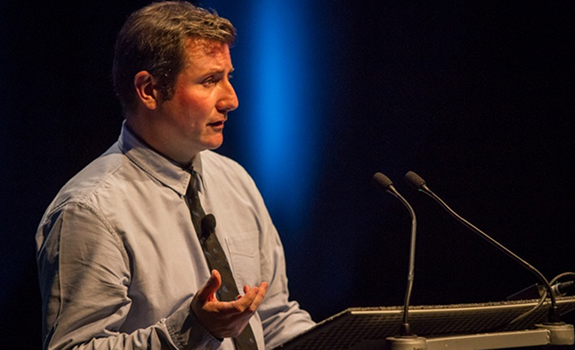
As young media consumers are social media oriented and use mobile screen devices, the future of radio is to become social and visual, BBC Radio 1 controller Ben Cooper explains at the Radio Festival (photo: The Radio Academy)
Optimize schedule, music & events
When Ben Cooper was appointed as boss of Radio 1 in October 2011, the BBC Trust gave him a clear mission statement. The station’s average listener is 33 years. His challenge: bring it down to less than 30. The first part of his strategy is to guide Trendy Adults to other radio stations of the public broadcaster’s output, like BBC Radio 2 and BBC Radio 6 music. Cooper tailors the station’s schedule, music and events all towards young(er) people. Recent examples have been the replacement of Chris Moyles by Nick Grimshaw, the preference of One Direction over Robbie Williams, and the production of Hackney Weekend.
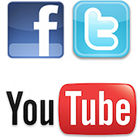 Target mobile media consumers
Target mobile media consumers
The second part of his plan is to attract Smartphone Teens to the radio station. Today, 6 out of 10 young people own a smartphone. “This is really key for us”, Cooper says. While BBC Radio 1 is still reaching 11.2 million listeners a week, its market share has gone down. Instead of 8 hours, the average Radio 1 listener now tunes in for 7.5 hours a week. The controller suggests that this half hour now goes to “the big three”; Facebook, Twitter and YouTube.
Daypart visual radio content
“If young people are spending their time in those areas, we should focus on them and see whether we can attract them with content that they like. That brings you to this issue of: what does radio look like?” Listen, watch, share is the station’s plan to unite radio, visuals and social media. The visual part might be the main challenge: “I believe that what you want is different things at different times of the day.” He thinks radio should offer the whole range; from a constantly updated site to a full TV experience like the Teen Awards.
“What we’ve got to do, is provide
the right content at the right time on the right device”
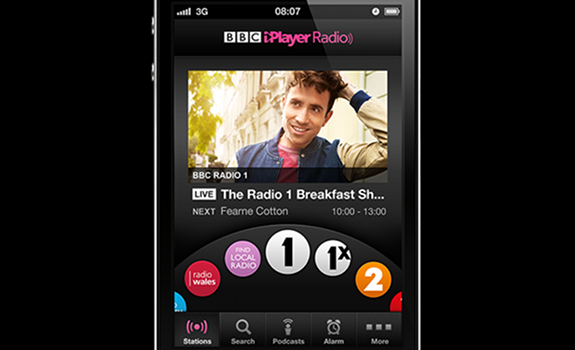
The BBC iPlayer Radio app for iOS could attract more Smartphone Teens with an iPhone to Radio 1 (image: BBC)
Feed mobile & fixed devices
BBC Radio 1 has chosen to create a visual radio strategy based on how mobile and fixed screen devices are being used during the day. When people get up, they probably grab their mobile phone first. During breakfast, they might turn on the TV or radio, and while traveling they most likely use their car radio or mobile phone. At work or school, they often work with fixed screen devices like a PC, and during evenings at home it might be a mix of everything. At night in bed, they could take a final glance at their mobile phone or tablet before sleeping. “What we’ve got to do, is provide the right content at the right time on the right device. Radio 1’s visual content is tailored to that pattern from bed to bed.”
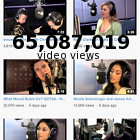 Leverage your YouTube presence
Leverage your YouTube presence
YouTube is potentially a huge radio platform. “We’ve had 50 million views on the Radio 1 channel, 40 million of which was in the last year. If you wanted a better stat for ‘the world is changing’, I think that’s probably the one.” He says that over 60% of the channel’s audience is under 25 years, and about 40% of them are watching it mobile. “Can the time spent on those devices replace the time listened to the radio station that is lost? That is the crux.”
Analyze social media stats
The question is also whether traditional ratings (like the quarterly RAJAR books in the UK) are sufficient to measure the success of multimedia brands that radio stations are becoming. “We have asked our teams to use relevant data from YouTube, Twitter and Facebook to try and work out new ways of making programs more impactful. Have you engaged with your audience; have you said something that has actually made you trend on Twitter? Have you done something interesting so that people actually wanted to not only listen to your show, but also watch some of the content you’ve got on YouTube?”
“The death of radio has been greatly exaggerated”
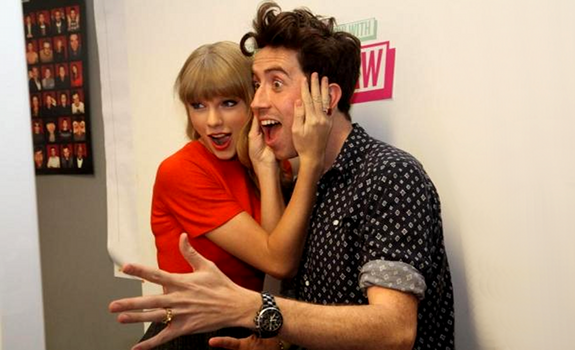
When Taylor Swift re-tweeted a photo of her visit with breakfast host Nick Grimshaw to her followers, BBC Radio 1 instantly reached 19 million people, demonstrating social media’s huge radio promotion potential (photo: Tumblr)
Focus on audience impact
After spending a lot of time and effort on social media over the last couple of years, BBC Radio 1 now has over 1 million Facebook fans and trends on Twitter quite often. Ben Cooper notes that it’s not just about the numbers. It’s cool when Taylor Swift visits Nick Grimshaw for an interview – and re-tweets a photo that the station took of it to (back then) 19 million followers – but in the end it’s all about the impact on the listener. “You can have great backslapping sessions, but when you realize that most of those people are probably from Texas and like Country music, you kind of say: I’m not sure if that’s really relevant.”
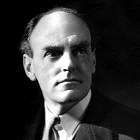 Inform, educate & entertain listeners
Inform, educate & entertain listeners
What kind of content does matter? “I believe Lord Reith has still got it right to this very day in terms of public service values: inform, educate & entertain“, Cooper quotes the BBC’s late godfather. “We inform our audience about new music, educate them in social action campaigns and entertain them, hopefully, with the most diverse set of presenters anywhere in radio. It is very powerful when those three things come together to celebrate young people in the UK.”
Develop industry-wide creative partnerships
The controller hopes to inspire a new generation to discover radio. “The death of radio has been greatly exaggerated. I’ve heard so many conferences telling me about ‘video killed the radio star’ and I just don’t believe it. I think we’re in a very strong position.” Cooper likes that both commercial and public radio in the UK work together on ideas and innovations like the Radioplayer. He quotes American computer scientist Alan Kay, who said that best way to predict the future is to invent it, and adds: “There’s a very important phrase in history – and I think we can turn that into another one: Radio is dead, long live Radio.”
Read also:
- “Brilliant Radio Is The Train That Pulls The Carriages”
- Coaching Talents Is “Like Being A Psychiatrist”
- Future (related articles)
Stay tuned, follow us @RadioILOVEIT and click below to share this post:





Add Your Comment